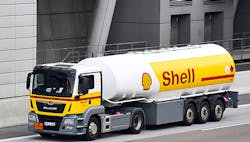It's all about joining things that didn't used to be together—for better operations and outcomes.
On the people side, remote access can include freeing operators and engineers from fixed workstations with tablet PCs, smart phones and other mobile interfaces. On the equipment side, remote access usually consists of microprocessors, software and increasingly capable Internet and Ethernet networking, communication protocols and support software, which are bringing both sides together more quickly and easily.
Of course, the crucible that all remote access innovations and strategies have been burned in lately is COVID-19. The pandemic turned many optional solutions like teleconferencing and wearable interfaces into absolute necessities. Now, as COVID-19 ebbs in vaccinated areas—despite recent spikes by the Delta variant—and as communities, businesses and industries start to reopen, the question is which remote innovations, strategies and technologies will continue to be the most practical and useful going forward?
"The pandemic made people change their ways of doing things, and shift to using Zoom, Webex and Microsoft Teams for meetings and our HMT-1 assisted reality devices for working in the field. At first, they used them because there was no choice, but they began to see the value as they experienced them," says Rama Oruganti, chief product officer at RealWear. "They learned they could save time and money by not having to travel, improve safety by not having people go into hazardous areas as often, increase productivity by enabling individuals to do more, and fix equipment faster for added savings."
Oruganti adds that assisted-reality devices like HMT-1's head-mounted tablet PCs, cameras and displays let remote experts see what onsite technicians are seeing, consult with them, and annotate on shared images to show what needs to be done. They can also run voice-enabled software apps and participate in Teams, Zoom and WebEx calls for added collaboration.
For example, Shell reports in a recent blog post that an IT glitch recently caused it to temporarily close its fuel terminal in Wesseling, Germany, and potentially disrupt distribution to motorists and heating oil customers. However, lockdown restrictions due to COVID-19 prevented Shell's Belgium-based IT system supplier from traveling to Germany, and the problem turnout to be too complex to solve via telephone. (Sept. 16, 2020, "How technology stepped up when COVID-19 struck," by Adam Lusher)
Fortunately, terminal manager Klaus Moeckel added a RealWear device to his safety helmet, and used its camera and a secure Internet connection to show the IT specialists in Belgium what he was looking at. They gave Moeckel verbal instructions and used RealWear's micro-display to add to what he was seeing, for example, by circling a wire that needed to be moved. Shell reports these interaction soon solved the IT problem and allowed the terminal to maintain distribution.
"Almost everyone likes RealWear now,” says Jens Thun, automation and digitalization lead for Shell Trading and Supply. “Before COVID-19, there were skeptics. Not now. This technology will permanently change how we work.”
Oruganti recommends that potential users try mobile augmented reality/virtual reality (AR/VR) devices because they can likely save time and money, make users productive, and let them work more safely. "RealWear devices are also available with many accessories that make sure they'll fit in any environment. We also make intrinsically safe (IS), IP66-rated versions," says Oruganti. "Potential users can look at problems they're facing like travel delays and costs, or assess what network connectivity they have versus what they need, and use that to determine which mobility and AR/VR technology would be best for them."
About the Author

Leaders relevant to this article:


